
Key Points
- Equities Break Short-Term Support Levels
- Long-Term Trends Remain Bullish
- 10-Year Rallies Further, Curve Continues to Flatten
- Commodities Come Under Increased Pressure
- Dollar Remains Bullish
U.S. Equities
What a difference a week makes. Last week we noted that there was not much done in the way of technical damages to the weekly chart of the S&P 500. However, this week begins with the index below the 10-week moving average after declining for a second consecutive week. Now is when knowing YOUR specific timeframe matters a lot. Short and intermediate-term traders/investors are likely noticing that their risk management systems are kicking in and cash levels are rising. However, for long-term investors, the rising 40-week moving average still speaks to a bullish primary trend. At the same time, the 14-week RSI is in a bullish regime.
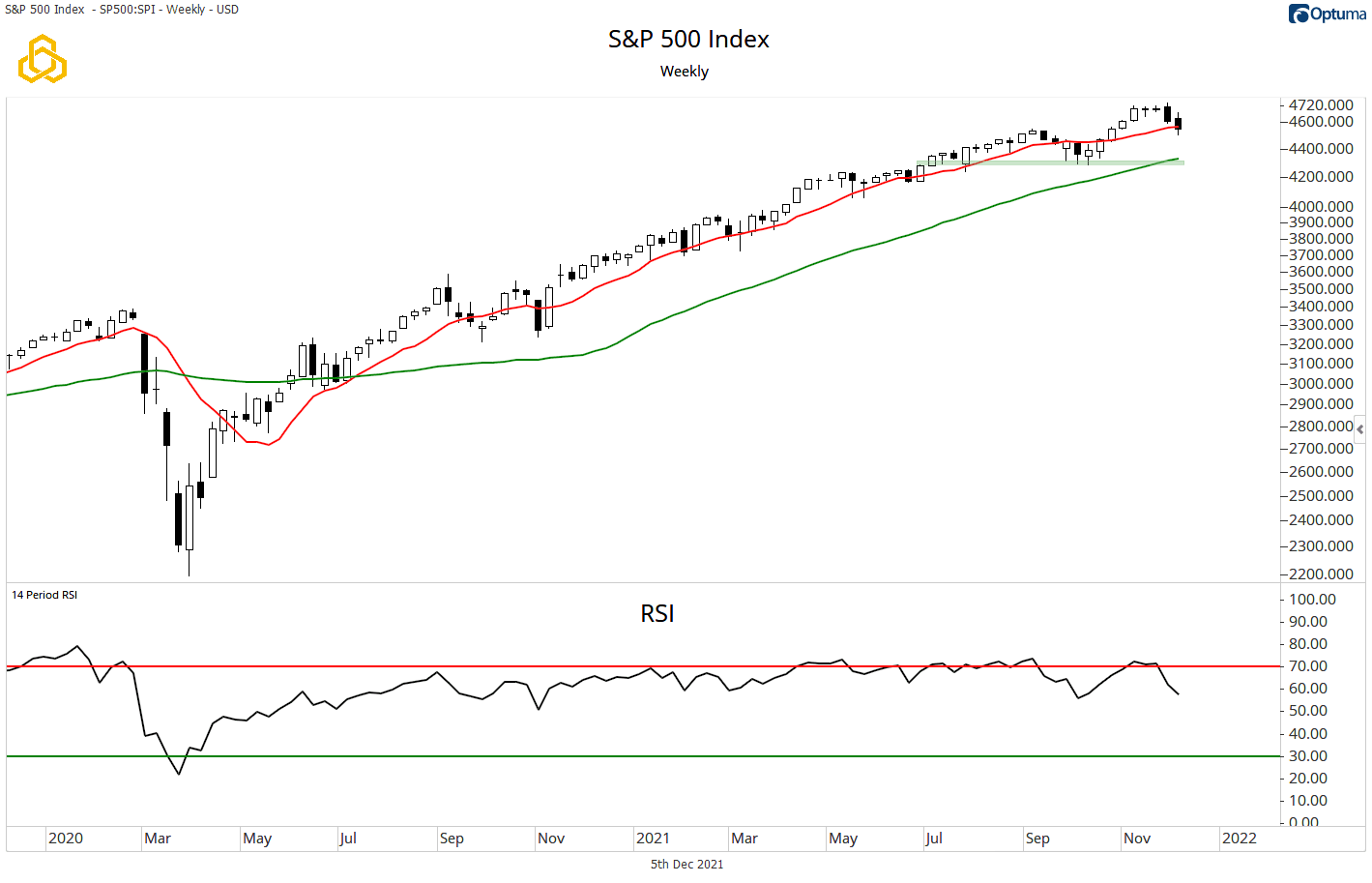
The technical damage to the S&P Small Cap 600 is more pronounced. After the failed breakout, the index closed below the 10 and 40-week moving averages, both of which were flat, to begin with. The 14-week RSI is moving lower after failing to confirm price strength on the breakout. Finally, the relative trend is in the process of moving below support.
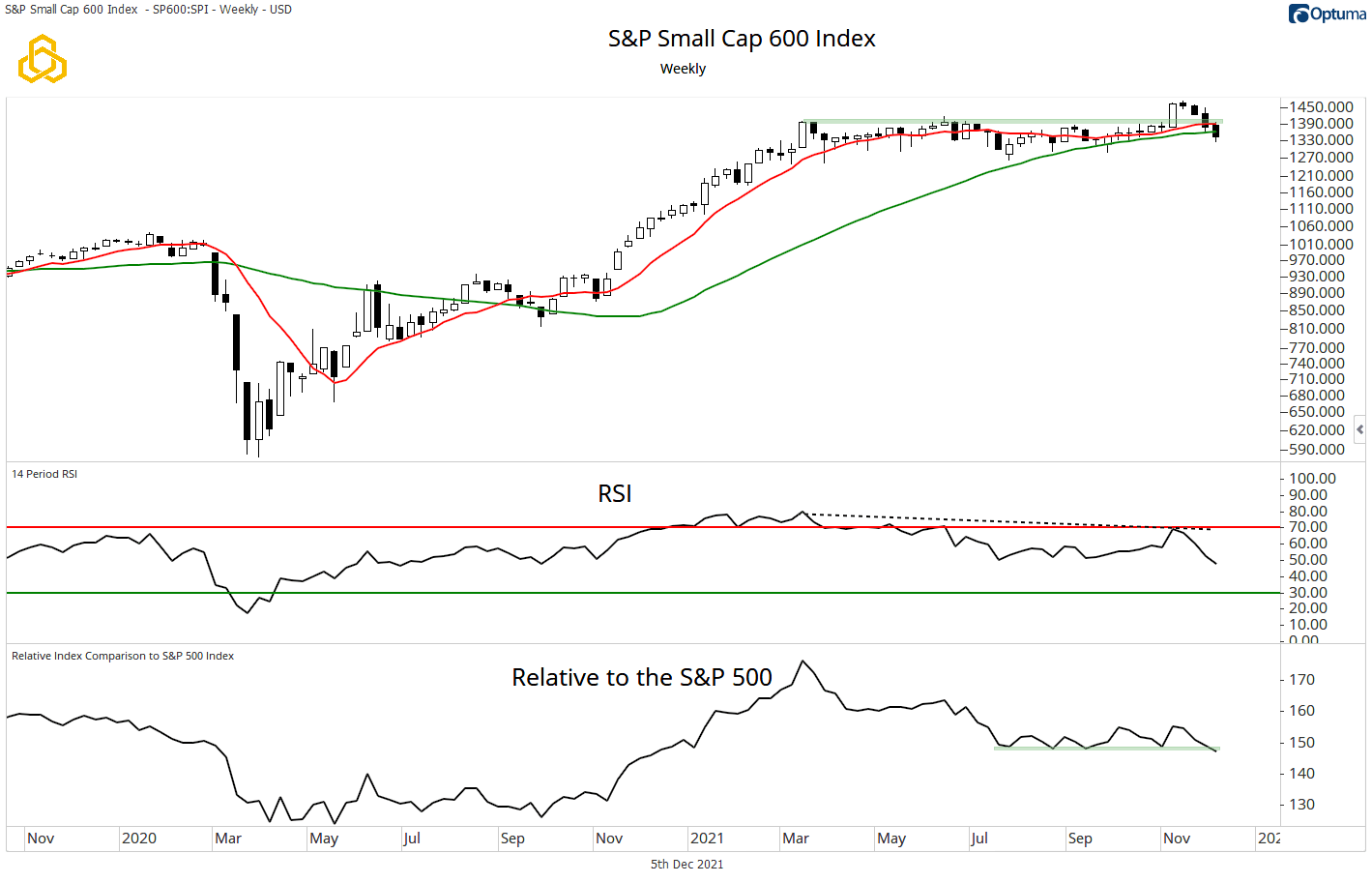
Within the S&P 600, only one group was higher on the week:
- Utilities – This “defensive” group was the only one to close higher on the week.
- Technology – Fading from record highs, tend support is in play.
- Energy – Ugly pullback after a failed breakout, testing support.
- Health Care – The worst of the week, breaking down.
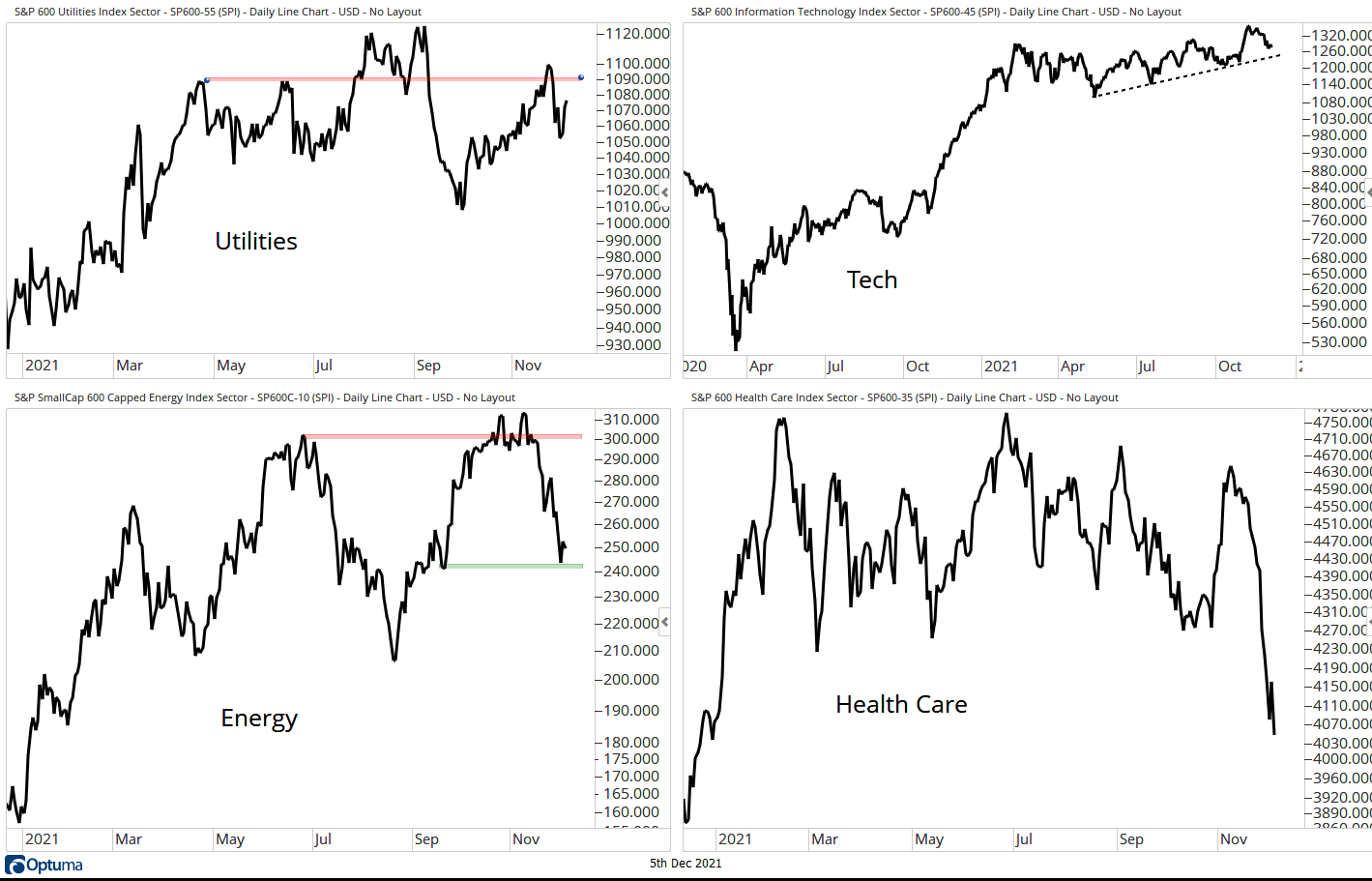
As with the S&P 500, timeframe matters for the NASDAQ Composite, the short and intermediate-term trends are under pressure and can no longer be considered bullish with a close below the 10-week moving average. However, the rising 40-week moving average speaks to a long-term trend that is still to the upside. The 14-week RSI is holding in a bullish regime. The relative trend is choppy, with the prospect of testing the early 2021 highs diminishing.
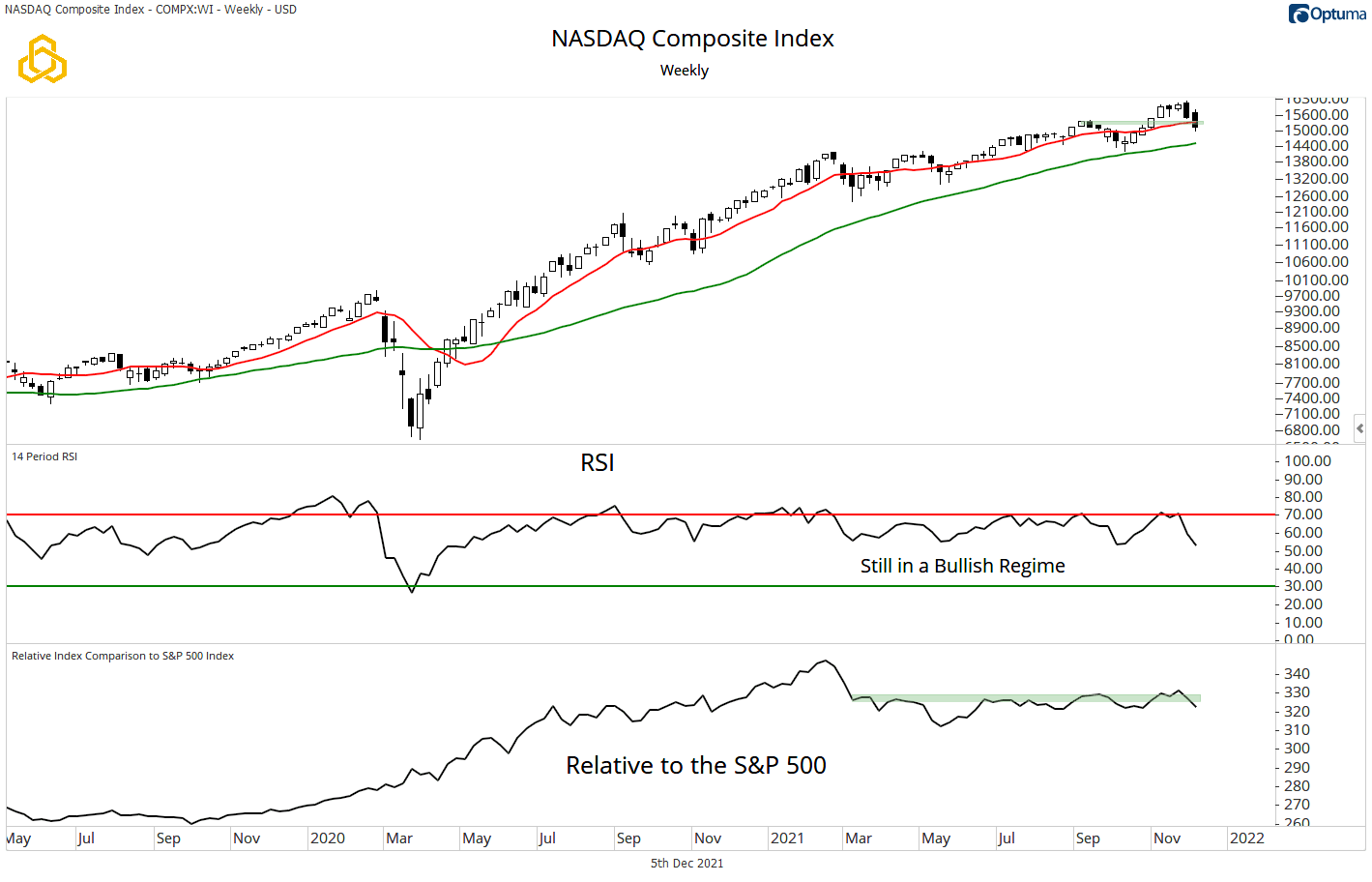
U.S. Fixed Income
The 10-Year Note followed through on strength in the previous week to break above the 10-week moving average and is now testing the 40-week moving average from below. The 14-week RSI is moving higher after a bullish divergence, and we are now on watch for a breakout.
At the same time, there appears to be a strong ceiling on yields at the 1.75% level. We have called this a key chart to watch as a move lower in rates will likely point to further risk reduction on the part of investors.
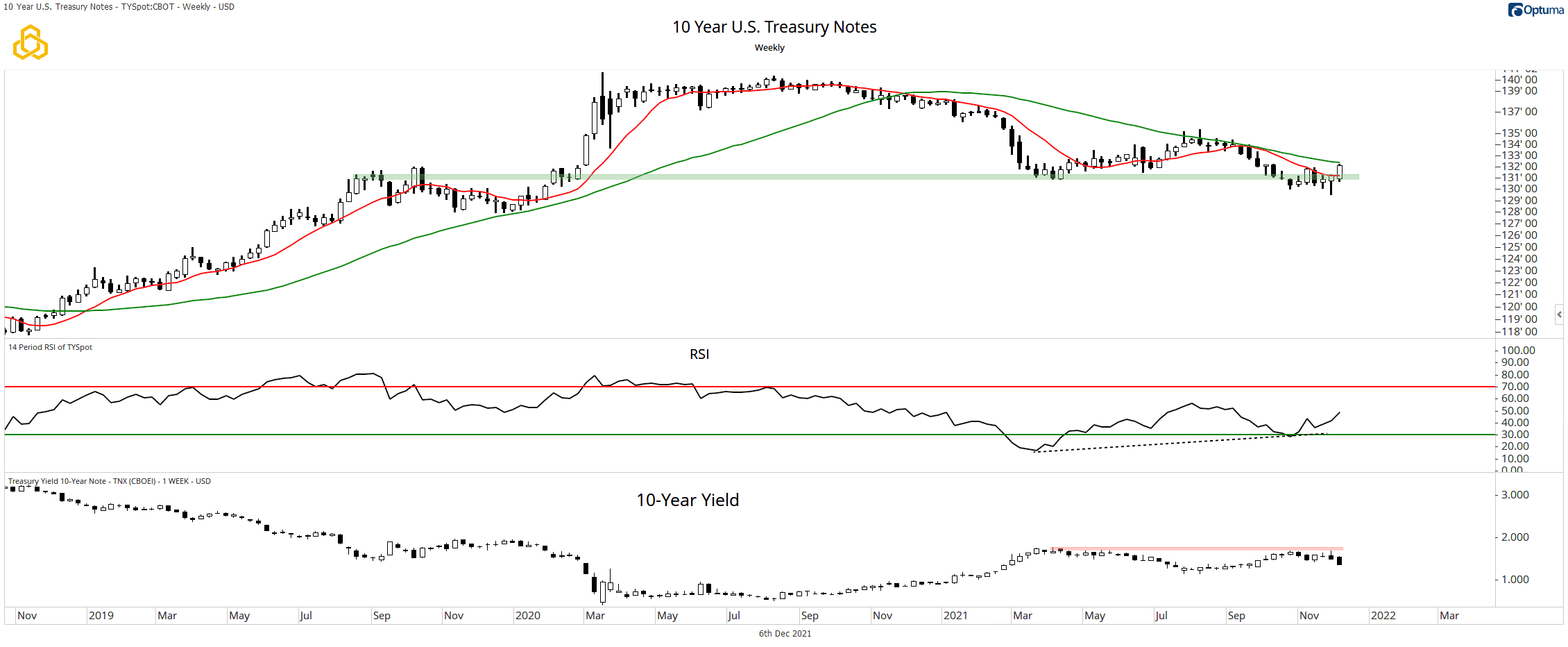
Rates moved lower across the curve last week, except for the 2-Year, which is likely responding to the prospects of the Fed’s taper. The curve continues to flatten, with the 20-Year/30-Year spread inverted.
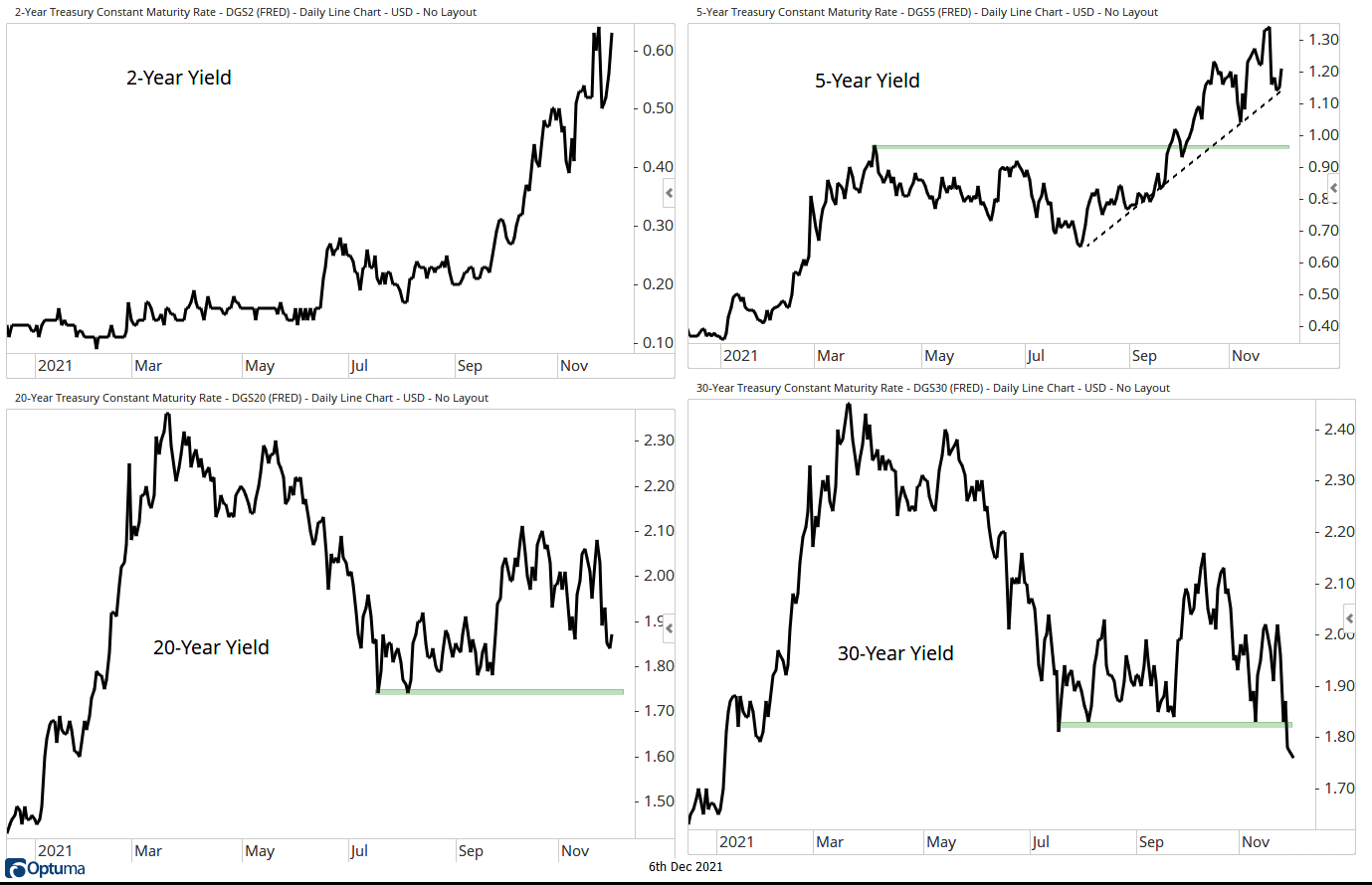
Global Equities
The Global Dow sustained further damage last week, remaining below the 10 and 40-week moving averages. The 14-week RSI is trending lower after failing to become overbought and is making a lower high.
The relative trend remains bearish until resistance is overcome.
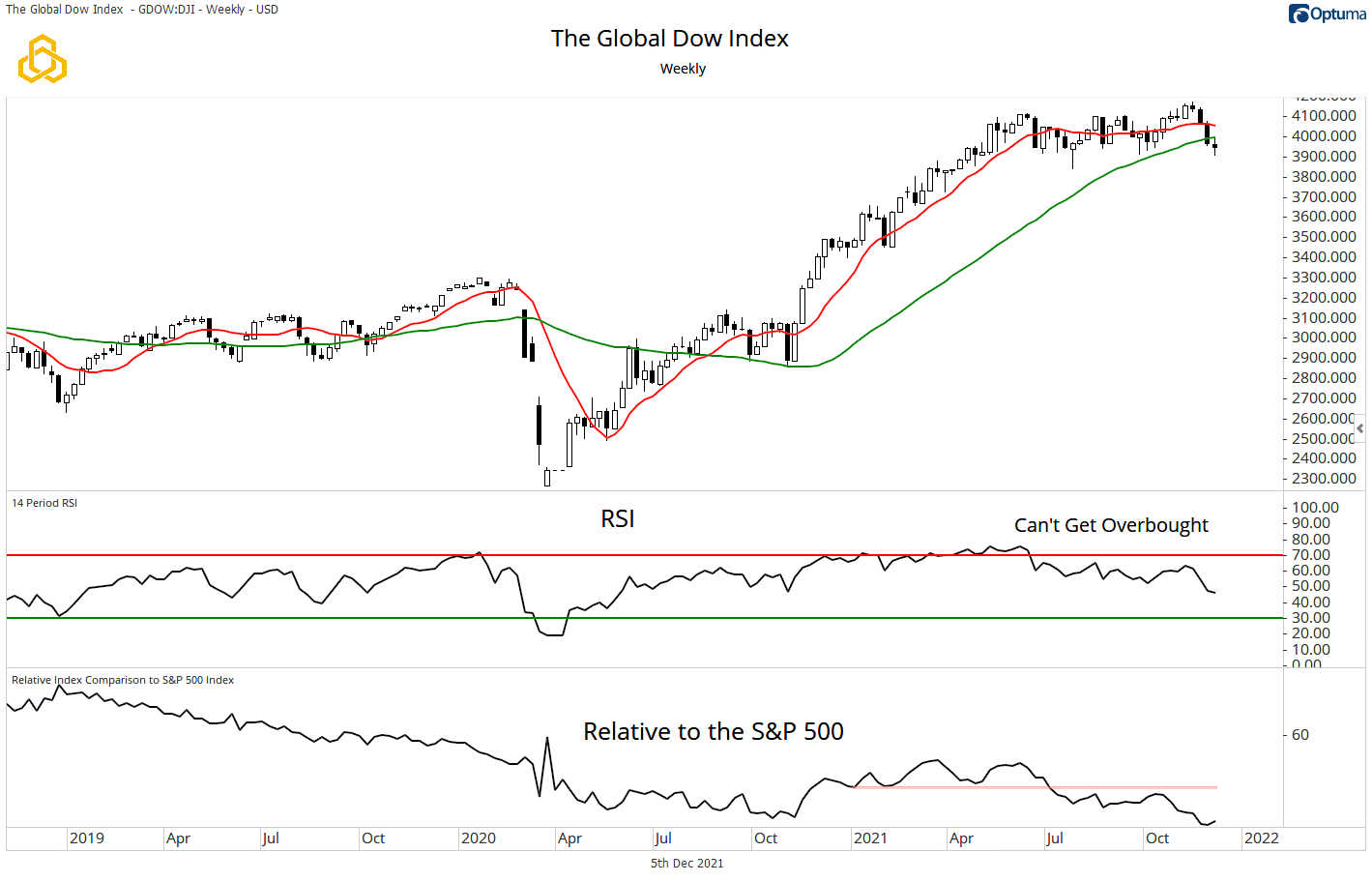
Commodities
The Bloomberg Commodity Index also sustained further damage this week, closing below price-based support after breaking below the 10-week moving average in the prior week. As with equities, the short-and intermediate-term trends have turned lower (note that the 10-week moving average is now falling). However, the rising 40-week moving average did serve as support. The 14-week RSI is moving lower after failing to confirm the price high on October 29th and has made a lower low.
The relative trend is holding below the breakout level. Until this level is retaken, October’s strength will continue to be viewed as a false breakout.
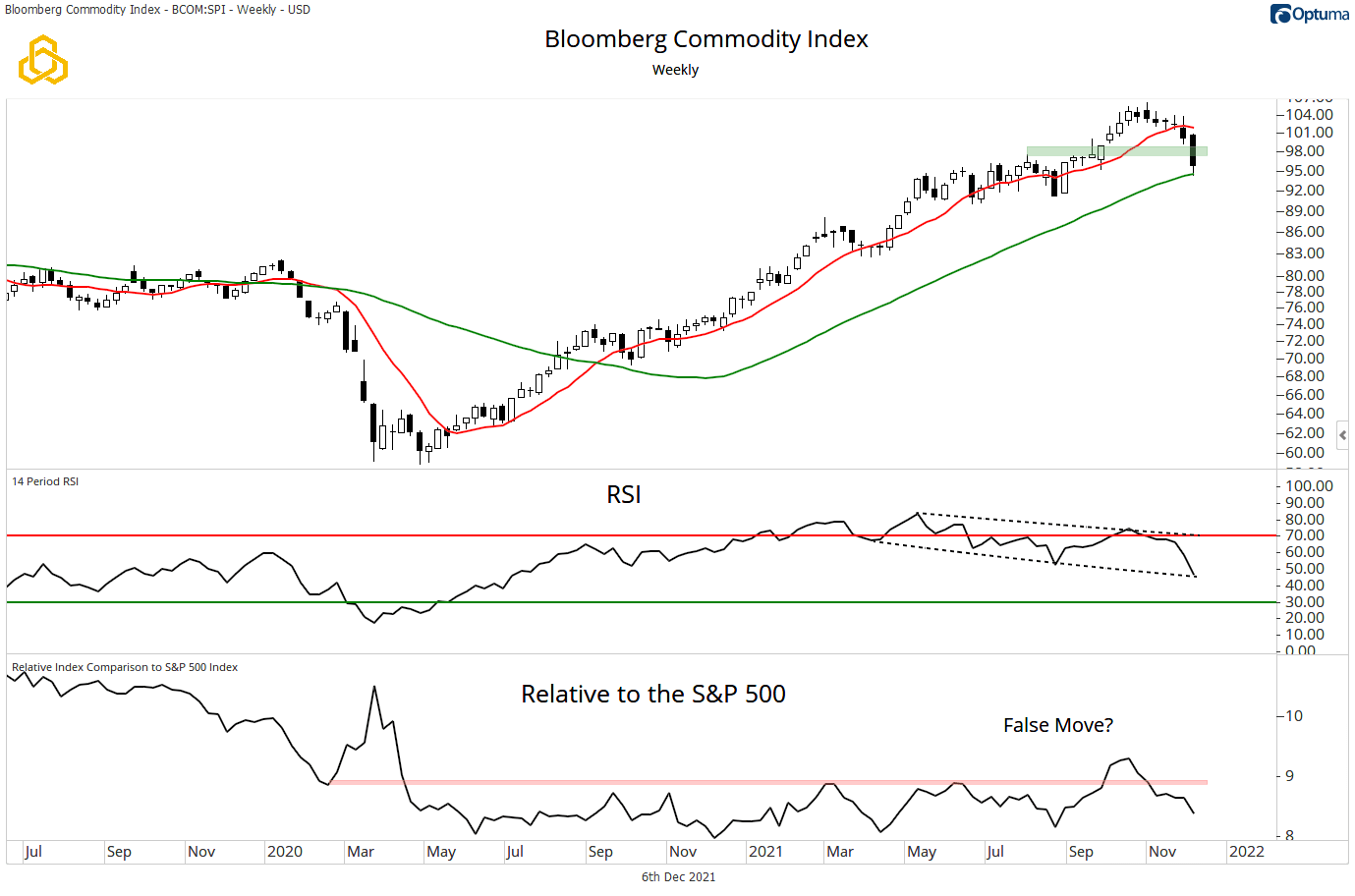
Within the commodity complex, weakness was seen across the board last week:
- Precious Metals – A lot of work is needed for the bulls to take back control.
- Industrial Metals – Under the rising trend line, below 460, the bears take the ball.
- Agriculture – Uptrend in place, and May highs are still in play.
- Energy – Bearish below the 250 level.
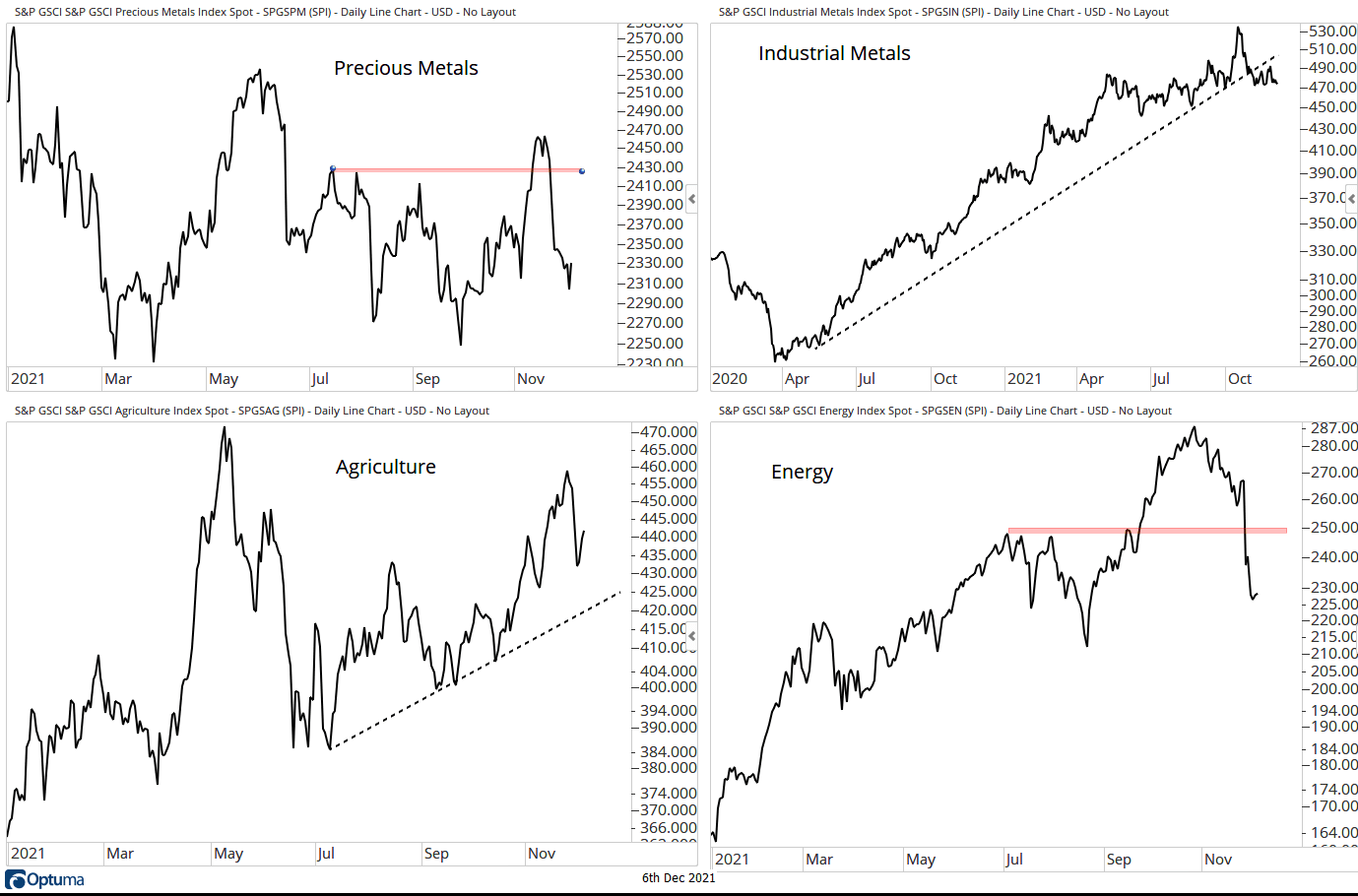
The Dollar
The U.S. Dollar remains above the 94.50 breakout levels and the rising 10-week moving average to keep the trend bullish. The 14-week RSI remains overbought, confirming price strength.
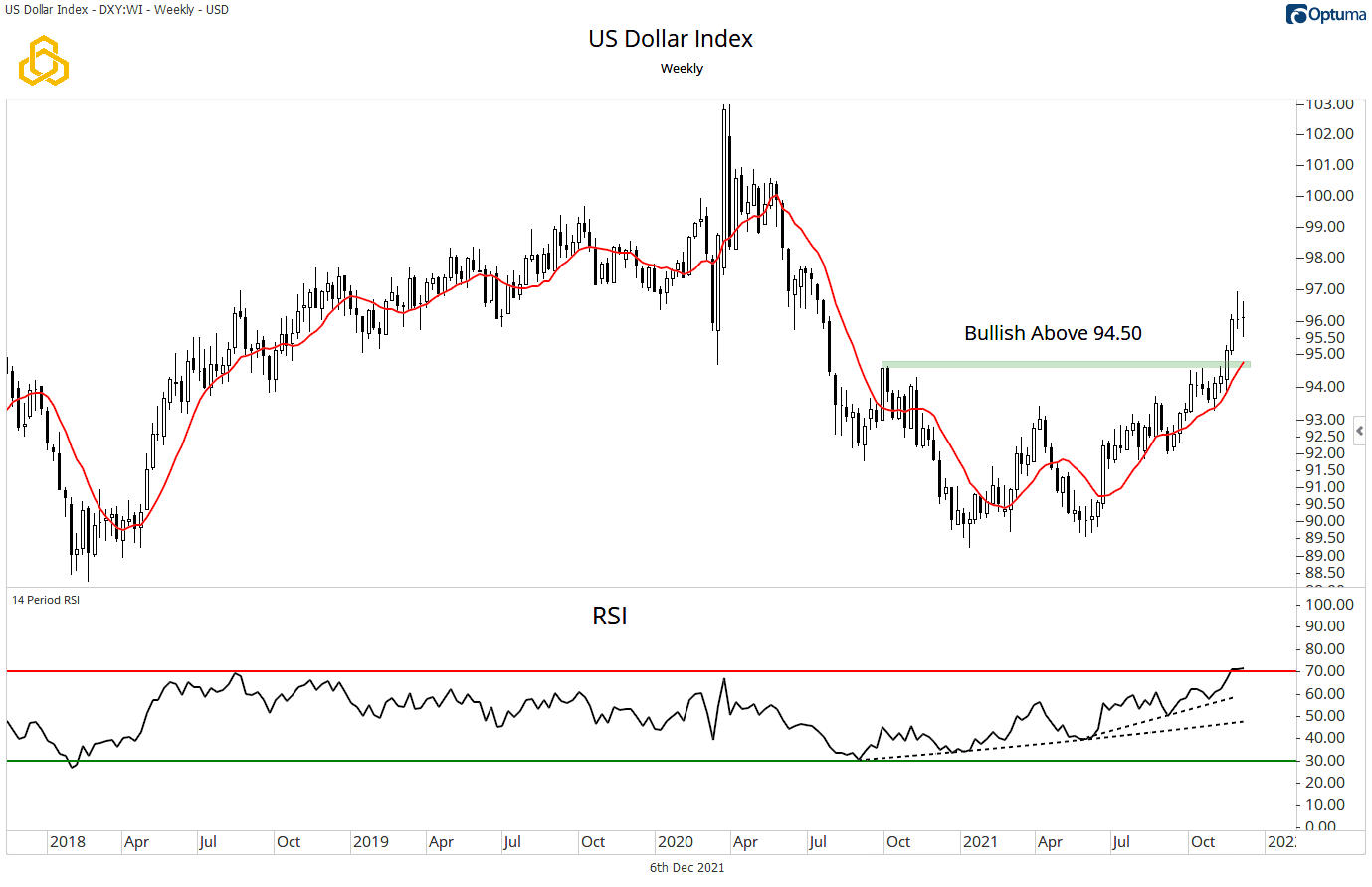
Take-Aways:
Timeframes always matter in markets. Right now, it is crucial. Short and intermediate-term trends have come under pressure while longer-term trends remain mostly bullish. There is still a risk-off tone to the markets, which we can see in the decline in commodity prices along with the fall in interest rates and strength in the U.S. Dollar.
Perhaps the most interesting trends are interest rates, which are mostly moving lower despite the Fed’s expected taper. The inversion of the 20/30 spread is a key development that should be on the radar of all investors as the bond market is sending a message.
Disclosure: This information is prepared for general information only and should not be considered as individual investment advice nor as a solicitation to buy or offer to sell any securities. This material does not constitute any representation as to the suitability or appropriateness of any investment advisory program or security. Please visit our FULL DISCLOSURE page.
